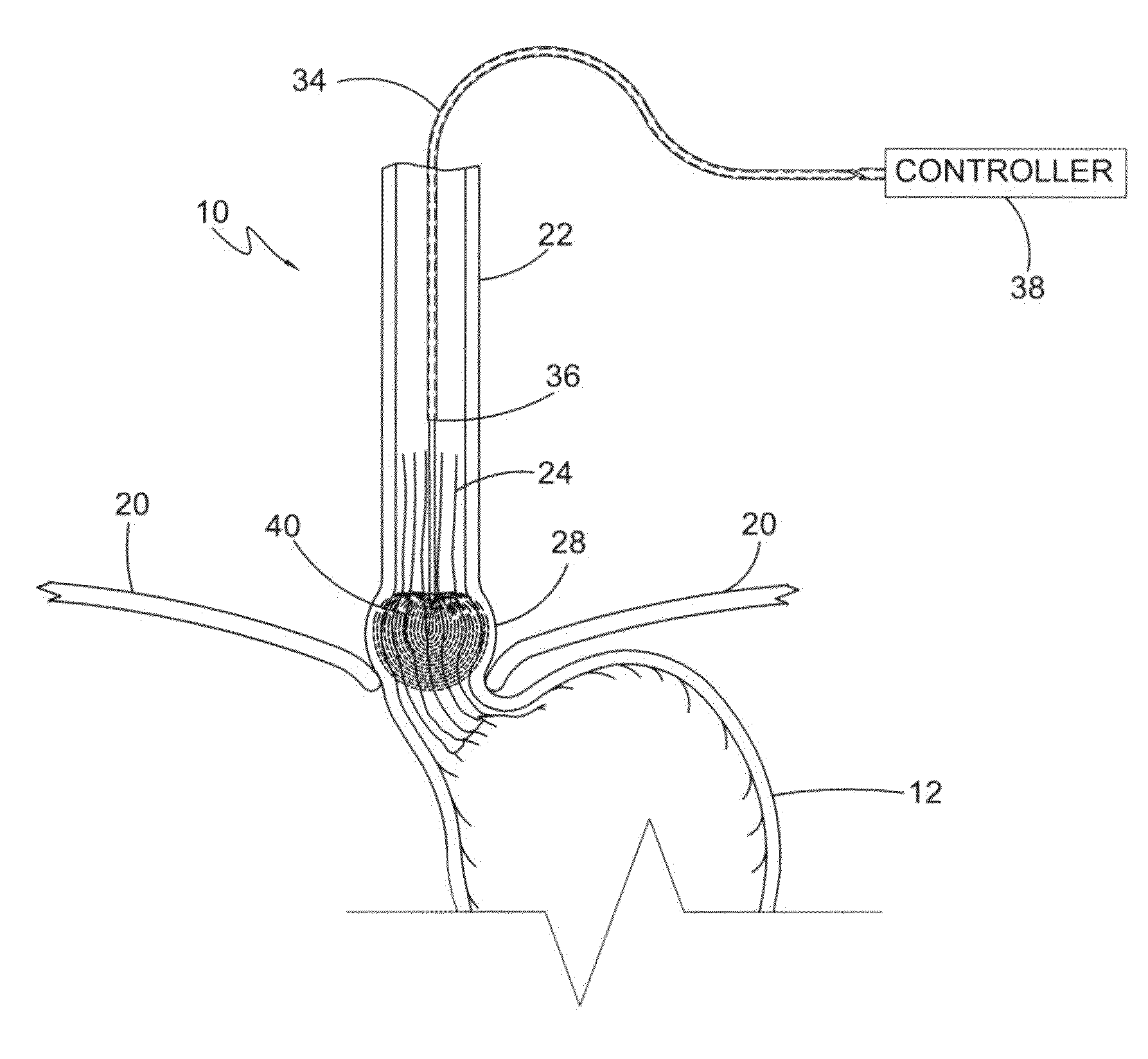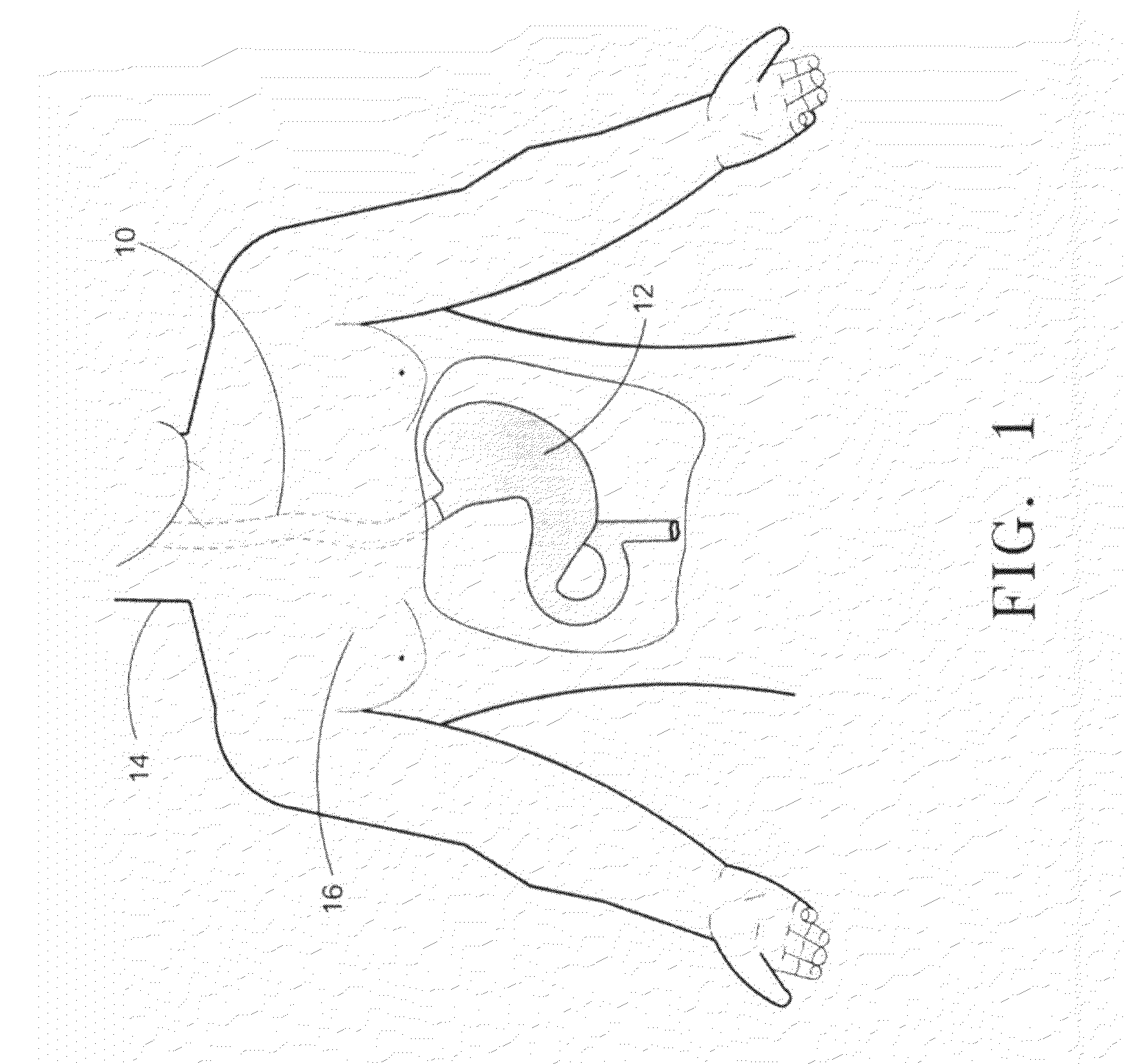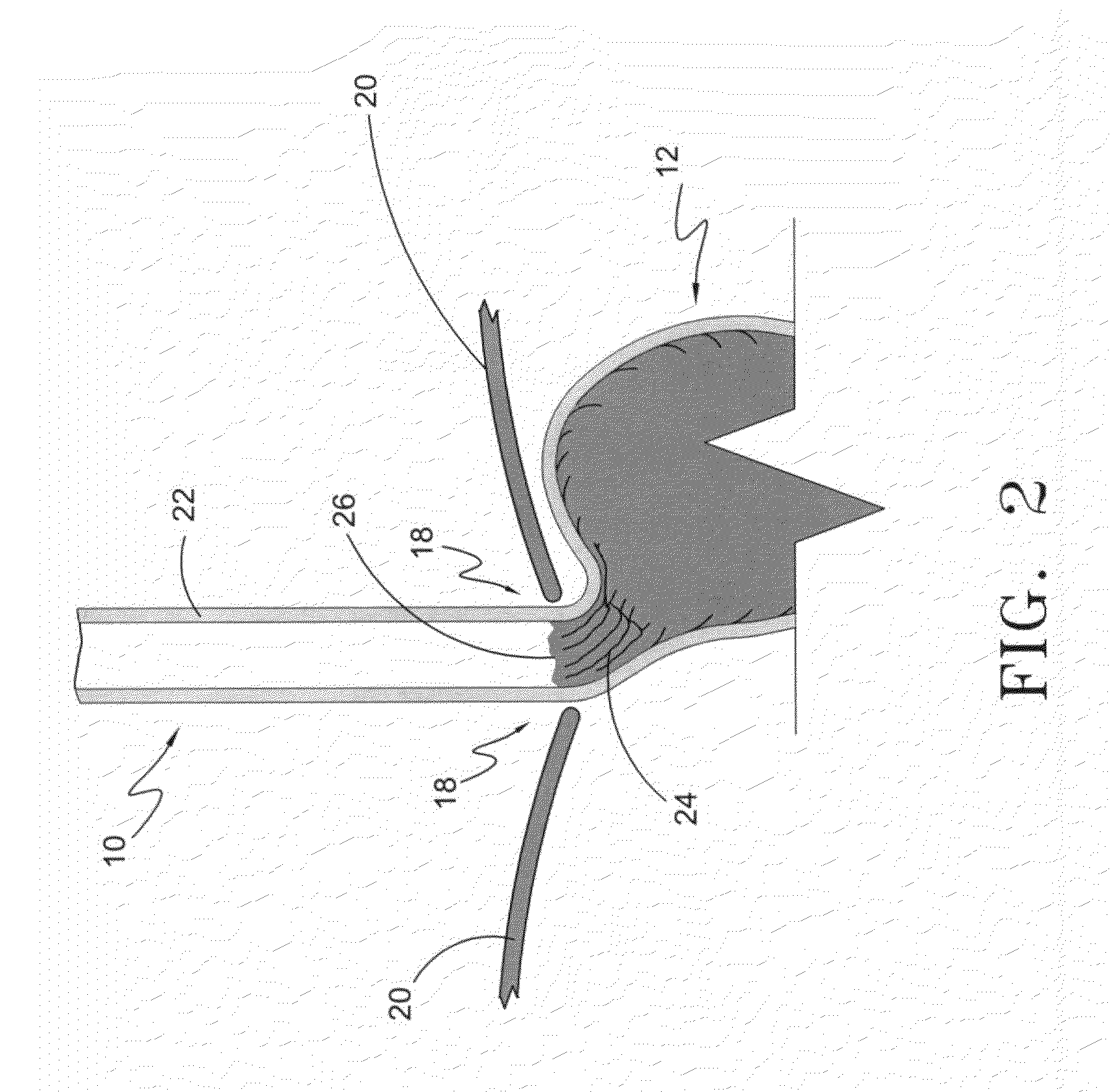Irreversible electroporation (IRE) for esophageal disease
a technology of esophageal disease and electroporation, which is applied in the field of medical procedures, can solve the problems of affecting the treatment effect of patients, unable to determine which patients with barrett's esophagus will go on to develop esophageal cancer, and the patient is at a higher risk of having barrett's esophagus progress to cancer, so as to improve the digestive function
- Summary
- Abstract
- Description
- Claims
- Application Information
AI Technical Summary
Benefits of technology
Problems solved by technology
Method used
Image
Examples
Embodiment Construction
[0023]FIGS. 6A and 6B show the endotracheal method of performing IRE on an esophagus (10) affected by Barrett's esophagus. A catheter (34) is advanced through the trachea (not shown) down into the esophagus (10) to a diseased region, which in the case of Barrett's esophagus is the columnar lining (24) of the esophagus (10). Advancement through the trachea (not shown) is relatively simple and may optionally require a guidewire to select the advancement route through to the esophagus (10). Steering of the catheter (34) may be effected under real time imaging using Video Assisted Thoracic Surgery (VATS). Once the catheter (34) is in place inside the diseased region (24), a flexible IRE device (36) is inserted through the catheter (34) to the diseased region (24) of the esophagus (10). The flexible IRE device (36) is used in the endotracheal method because it allows for the device to be easily steered through and properly positioned within the esophagus (10). FIG. 6B shows that the IRE ...
PUM
 Login to View More
Login to View More Abstract
Description
Claims
Application Information
 Login to View More
Login to View More - R&D
- Intellectual Property
- Life Sciences
- Materials
- Tech Scout
- Unparalleled Data Quality
- Higher Quality Content
- 60% Fewer Hallucinations
Browse by: Latest US Patents, China's latest patents, Technical Efficacy Thesaurus, Application Domain, Technology Topic, Popular Technical Reports.
© 2025 PatSnap. All rights reserved.Legal|Privacy policy|Modern Slavery Act Transparency Statement|Sitemap|About US| Contact US: help@patsnap.com



